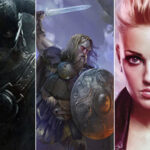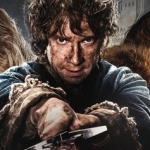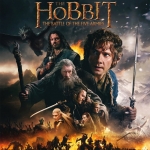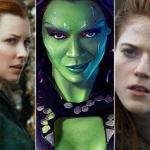
It’s hard to imagine a writer more influential to modern fantasy and more revered by decades of scholars and fandom than J.R.R. Tolkien. Tolkien’s world of Middle Earth laid the foundations for an entire genre of fiction, and his fans rightly laud The Lord of the Rings and The Hobbit as exceptional and essential fixtures on any fantasy bookshelf. When Peter Jackson adapted Tolkien’s three central volumes into groundbreaking films in the ‘00s, the resulting movies were award winning masterpieces that stuck as closely as they could manage to the source material. Sure, there were scenes added or modified here and there and sections that had to be edited down or dropped for pacing or length, but the sum total of Jackson’s The Lord of the Rings is a loving and exhaustive retelling of the classic epic. His production of The Hobbit, now two thirds of the way through its trilogy, is an entirely different beast altogether, and its second installment, The Desolation of Smaug, arrives on Blu-ray this week.
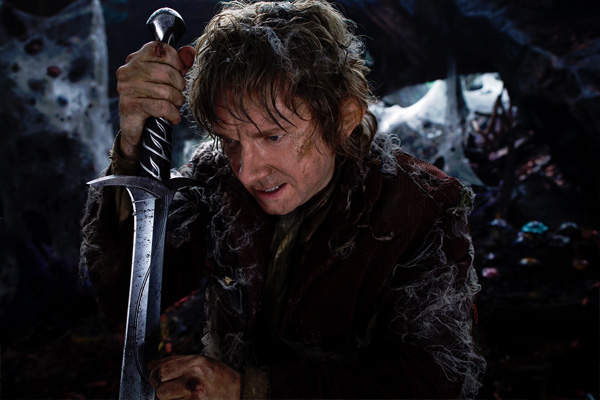
Other critics have made much ado about the decision to expand The Hobbit, a book itself shorter than any one of the three volumes of The Lord of the Rings, into a full trilogy of the same length of the entire LOTR movie trilogy. It’s a common point of concern when approaching this newest series, and it’s one that, as it turns out, is entirely valid. When I previously reviewed the first part, An Unexpected Journey, I noted that the book’s adapted events indeed felt padded and stretched for length. It shouldn’t be surprising, then, that I’m saying the same about The Desolation of Smaug. All the familiar scenes from the original text that appear in this second film feel about twice as long as they need to be. Jackson uses four shots of dwarves walking when two would have sufficed. He lets a two minute conversation stretch to four minutes. He lets an otherwise exhilarating action sequence play for long enough to run out of steam when it’s only halfway through. It’s hard to come up with an artistic reason for protracting every moment in the film in this way, and the only reasonable explanation is that the movie just needed to be longer to fill up more time in the trilogy.
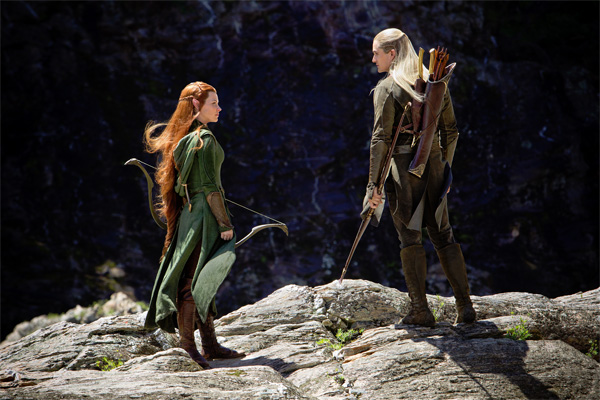
Slow pacing seems an odd complaint for this movie, as it is bursting at the seams with action scenes, all of which look fantastic. Still, the running time is 161 minutes, and The Desolation of Smaug feels every bit that long. A slow pace isn’t enough to fill up this middle movie, though. Jackson takes great liberties with the source material—many more liberties than he took in An Unexpected Journey—to change key moments and events, as well as to squeeze buckets full of new characters and even plotlines in between Tolkien’s decreasingly recognizable story. Did you ever think that The Hobbit would have been a great book if it had just had Legolas in it? You’re in luck, because Orlando Bloom returns to unnecessarily reprise his elven archer for the film. Are you someone who wished Tolkien had just slapped that LOTR appendix about Gandalf going to Dol Guldur right into the middle of The Hobbit? Again, you’re a winner! There’s plenty of wizard wandering and Necromancer hunting that never appeared in The Hobbit, not to mention loads of action and dialogue that never came from Tolkien’s pen. Add a completely Jackson-created elf named Tauriel (Evangeline Lilly) into the mix, and you’ll just be scratching the surface of all the alterations that happened in the course of making this adaptation. None of the changes or additions feels true to the spirit of the original book, and all of them sadly lend credence to the cries of expansion for the sake of wanting to make three movies where one would have sufficed and even excelled.
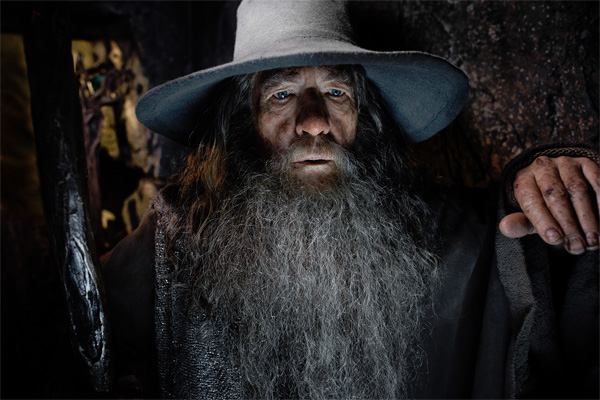
The central threads of The Hobbit, though tonally altered from the book in significant ways, are still present here as the dwarves and Bilbo continue their journey to confront the nefarious dragon Smaug under the Lonely Mountain. Gripes about pacing and poorly adapted plots aside, the movie looks gorgeous and matches the aesthetic Jackson and his crew established for the lived-in Middle Earth in the previous films. While neither of the Hobbit movies that have been released match the grandeur and charm of the Lord of the Rings movies, these two do maintain an air of adventure and wonder that mostly props up the problematic parts of the production. The Desolation of Smaug is a less silly movie than An Unexpected Journey, for better or for worse. Gone are the songs and much of the slapstick humor that pepper the first film, and in their place are bigger setpiece sequences and more frantic and prolonged action scenes. While the movie isn’t a terrible film on its own, it is a poor adaptation that is overly long and frequently feels like a chore to watch.
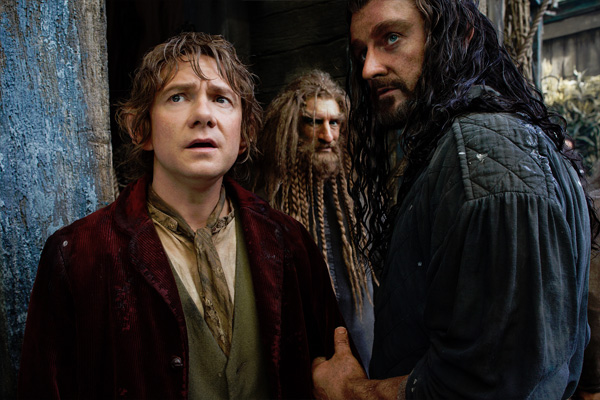
The Desolation of Smaug Blu-ray does come with an assortment of bonus material, including several documentary pieces that run between half an hour and 45 minutes each. The disc also packs in a location featurette about New Zealand, as well as a music video and some promo pieces for other Hobbit-related video games and Blu-rays. While these several features would be sufficient for most movie releases, it’s extremely likely that we’ll see a whole lot of additional content added in when the Extended Edition of the film inevitably arrives in stores. While the thought of watching an even longer version of this movie isn’t something I relish, Peter Jackson’s Middle Earth bonus material always is worth the price of admission for the Extended Editions.
The Hobbit: The Desolation of Smaug releases in stores on April 8, 2014.


